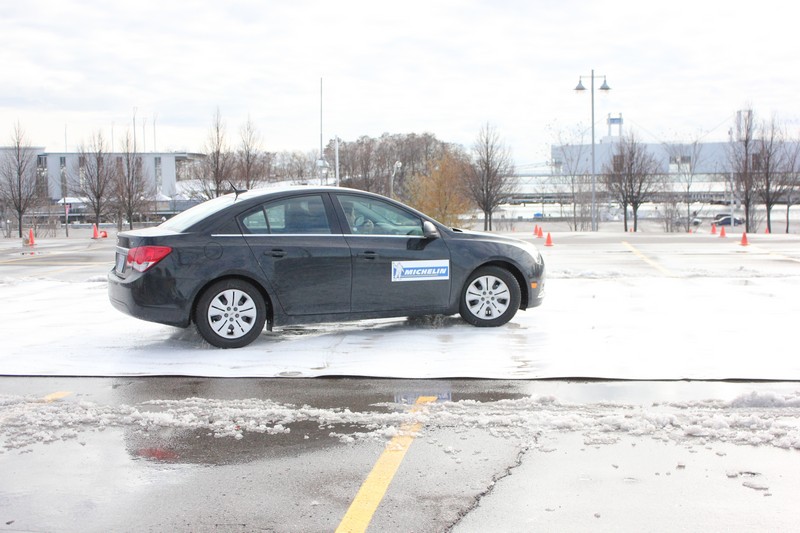
Michelin Winter Driving Academy focuses on adapting and sharpening winter driving skills
I have a confession to make. For most of the years I’ve owned a license (25 and counting) and owned a car (23-plus), I have not driven on winter tires. Yes, I am well-acquainted with the various benefits of driving on winter tires when the mercury dips into the negative and our Canadian roads are covered in snow and ice: better tread depth, combined with a compound more suited to colder temperatures produces better traction and more secure handling, especially in low-grip conditions (i.e. snowy and icy roads). I understand completely, and it makes perfect sense.
Yet for one reason or another, I usually don't switch to winters (and the accompanying steel wheels), but have managed to avoid accidents for the most part. Don’t get me wrong – there have been couple of fender-benders and some other near misses over the years, but I have yet to be involved in a serious winter accident.
Although I have been lucky, I think the main reason I’ve emerged relatively unscathed for all these years is less about the cars (and the tires) I’ve driven, than it is about driving habits. To me, reducing the risk of being involved in an accident starts with common sense. For example, I don’t usually drive in really bad weather (if I can avoid it) or if the roads haven’t been cleared. I also reduce my speed if I am out on treacherous roads and leave plenty of room between my car and others to ensure I have enough stopping distance. I also make sure my car is clear of snow and ensure my lights are completely on for improved visibility for myself and for those around me.
These steps might seem like no-brainers, but unfortunately they aren’t for many Canadians and the consequences can be quite serious.
Adjusting one’s driving habits during the winter and respecting changing road conditions are at the core of Michelin Canada’s Winter Driving Academy. During a recent blustery and cold afternoon (but with no snow), I spend some time learning about the program and perform several exercises in a Chevy Cruze shod in Michelin X-Ice winter tires.
Although the Cruze performs admirably in all three exercises (panic stop, obstacle avoidance and skid control), thanks in part to the X-Ice tires, the advice coming from Michelin instructors focuses on the driver, not the car or its tires.
“Drivers need to understand and respect winter conditions. It’s important to adapt driving to existing conditions, especially when facing winter hazards such as black ice and slush,” says Carl Nadeau, a professional race car driver and one of the Michelin Winter Driving Academy instructors.
With that in mind, Michelin has set up a special website to act as an interactive winter driving resource that provides information for winterizing a vehicle and tips to improve winter driving skills.
Some of the tips visitors will find on the Michelin Winter Driving Academy site include:
- Stopping distance, handling and performance are all improved when driving on four winter tires.
- When the temperature dips below 7 degrees Celsius, it is time to switch to winter tires, even if the roads are dry.
- Tires lose pressure as the temperature drops, so it is important to check the pressure at least once a month
- If the vehicle in front of you loses control, brake while safely trying to avoid the accident. Rather than staring at the vehicle in question, focus on where you want to steer your own vehicle.
- Make sure you always have at least half a tank of gas to avoid a frozen gas line.
While Michelin is clearly interested in selling as many sets of winter tires to Canadians as possible, the website does provide an abundance of good information that would be of benefit to anyone regardless of vehicle and tire choice.
I have yet to switch my car to winter tires, and honestly, I’m not sure if I will. I don’t drive as much these days thanks to the GO train and the number of press vehicles I find myself in, but this program provides further evidence of their utility during the winter.
That alone might be enough to change my mind, and if it doesn’t I can imagine getting stuck trying to leave my parking space might just do the trick.
For more information on the Michelin Winter Driving Academy go to www.michelinwintercenter.com






















